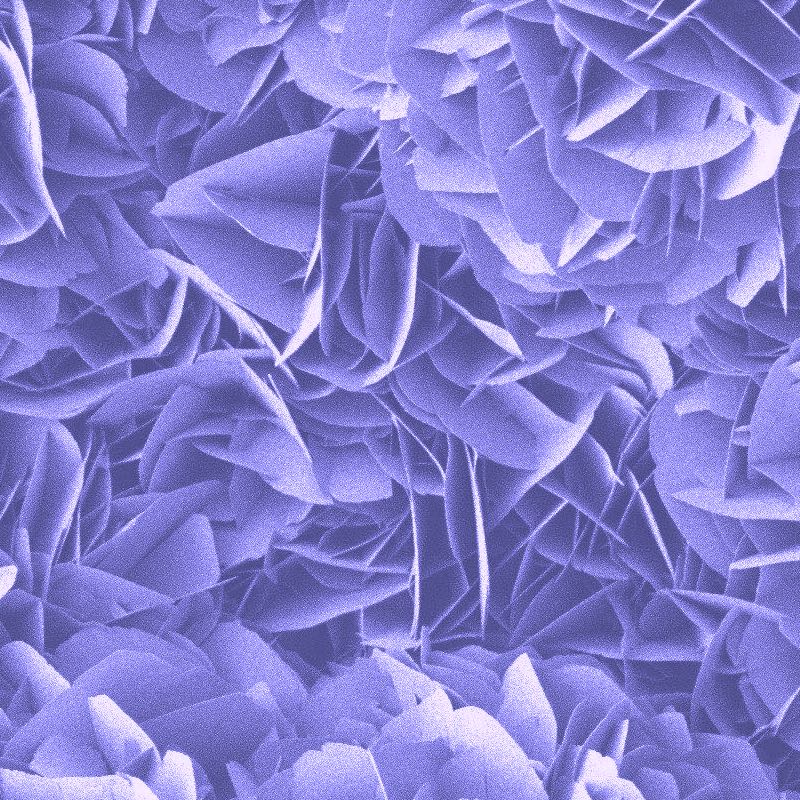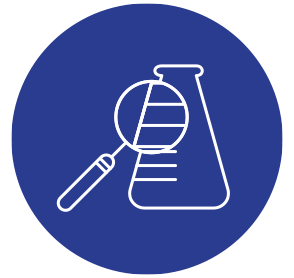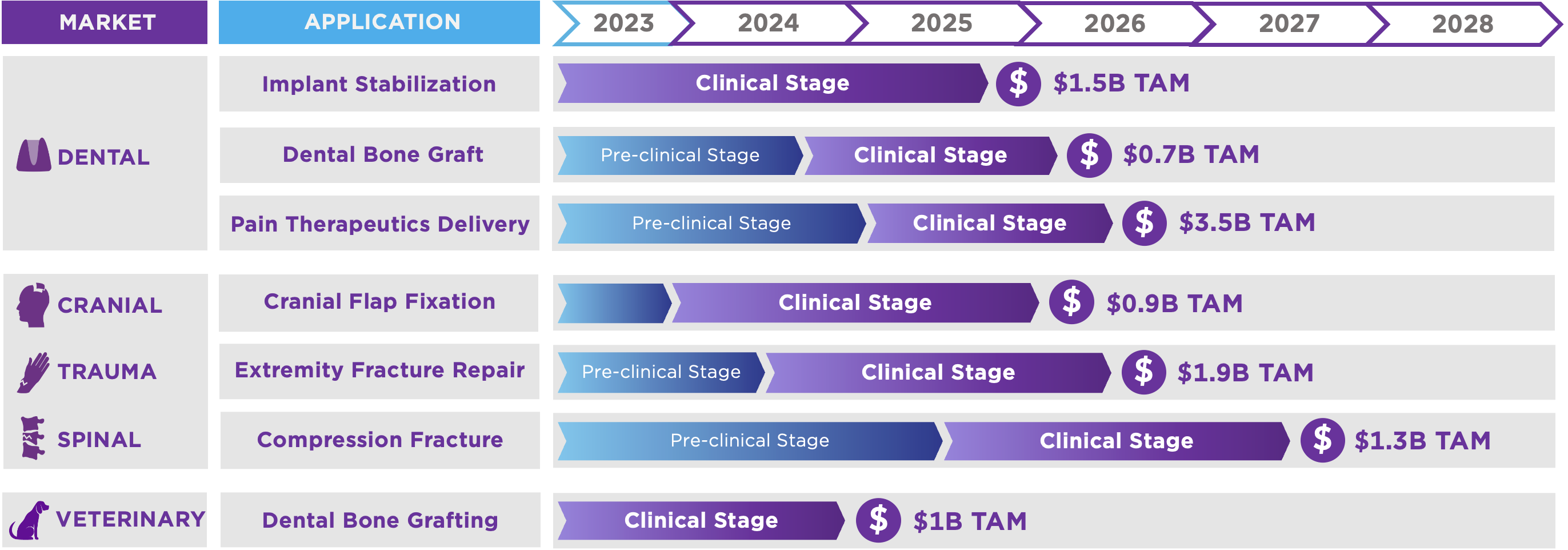

TRANSFORMING BONE REPAIR
RevBio was started with one goal in mind—to end medicine’s 50 year search for a biocompatible bone adhesive. Effective for bone-to-bone as well as bone-to-metal wet field applications, TETRANITE® is a revolutionary biomaterial that promises to transform bone repair—for both patients and clinicians.
TETRANITE® IS TRANSFORMING BONE REPAIR
Inspired by the marine animal the sandcastle worm, TETRANITE is elegant chemistry. Bioengineered from the worm’s secreted protein, our synthetic bone adhesive is the only patented biomaterial which satisfies both the required and desired properties for a bone adhesive: wet field performance, multi-surface bonding, rapid mechanical stability and controlled biodegradability.

TETRANITE TECHNOLOGY
TETRANITE contains mineral-organic compounds modeled on natural materials. Once mixed with an aqueous medium, the material undergoes a transformation from a pliable putty to a cement-like adhesive scaffold. Once on the market, TETRANITE will become the first synthetic bone adhesive. As a synthetic product, TETRANITE does not rely on large molecules and therefore can be produced in large quantities at a low cost.

MECHANISM OF ACTION
The components in TETRANITE react within minutes to yield a uniquely adhesive composite system. After hardening, TETRANITE is bioengineered to withstand tensile and shear bond stresses as high as 3 MPa, similar to the strength of human cancellous bone. The TETRANITE scaffold is osteoconductive and bioactive, leading to the eventual replacement of TETRANITE with new bone. Over time, load bearing responsibility is transferred to the new tissue such that mechanical integrity is maintained.

SELECT PUBLICATIONS
The body of evidence for the efficacy of TETRANITE for bonding bone-to-bone as well as bone-to-metal is growing. Read some of our latest published studies and press releases.
- Bone Glue—The Final Frontier for Fracture Stabilization and Implantable Device Stabilization—M.R. Norton, G. Kay, M. Brown, D.L. Cochran.
- Pivotal Animal Study for Cranial Flap Fixation—Foley, Kevin T., Eric J. Woodard, Jonathan R. Slotkin, Cassandra K. Mayotte, Abigail C. Baldwin, Michael C. Brown, and Brian J. Hess. “Cranial flap fixation in sheep using a resorbable bone adhesive.” Journal of Neurosurgery 1, no. aop (2020): 1-9.
- Bioinspired Mineral–Organic Bioresorbable Bone Adhesive—Alina Kirillova, Cambre Kelly, Natalia von Windheim, and Ken Gall.
FROM THE BENCH TO THE CHAIR


LOWELL, Mass., Dec. 19, 2019 /PRNewswire/ — RevBio, Inc. RevBio Accelerates Enrollment in its First-In-Man Clinical Study: RevBio Successfully Enrolls Half the Patients in its First-In-Man Clinical Study for its Novel Bone Adhesive Biomaterial.
This study is to determine if a new bone adhesive is useful in stabilizing dental tooth implants. Data collected from the study will examine the strength, performance, and the safety of the material. Visit Clinical Trials.gov.
THE TETRANITE® PIPELINE
As TETRANITE’s technology is the foundation of a comprehensive novel regenerative bone adhesive platform, RevBio has developed a roadmap for bringing our solutions to market across multiple applications and indications.

TETRANITE IT!
BIOENGINEERING A BODY OF APPLICATIONS
As a biomaterial, TETRANITE has unique properties which allows it to be employed as both a fixation and a fusion device. This versatility positions it perfectly for a phased market introduction across a range of applications within the Orthopaedic, Dental and Animal Health market segments.

DENTAL STABILIZATION
The temporal benefits of TETRANITE will collapse a procedure that currently requires several surgical events and multiple office visits over twelve months to potentially one or two office visits over a timeframe of six months or less.
50%
The percentage of the U.S. population over the age of 45 that has one or more missing teeth, resulting in approximately 6 million dental implants placed each year.
2%
The percentage of the population with missing teeth who seek treatment in the form of dental implant supported crowns—the low percentage is largely due to the multiple surgery and office visits associated with these procedures.
$1.5B
The combined U.S. and European estimated market size for the immediate placement and stabilization of dental implants using TETRANITE.

DENTAL BONE GRAFT
Clinicians have validated the need for a dental bone graft solution that resorbs and is replaced by bone. They require a timescale commensurate with existing graft materials–but does not require ancillary fixation (screws, tacks) or containment devices (membranes, mesh).
31%
The percentage of dental bone graft procedures that fail to achieve sufficient bone volume. Almost half the dental implants placed require a preceding ridge augmentation/grafting procedure.
220
The number of dental bone graft materials, mostly in the form of loose particulates, approved by the FDA indicating a highly fragmented market with no clear winner as a product of choice among clinicians.
$700M
The estimated total available market in the U.S. and Europe for dental bone grafting.

CRANIAL FLAP FIXATION
The clinical use of TETRANITE in cranial flap fixation procedures is expected to enhance bone healing, reduce infection rates, and improve the cosmetic outcome for patients while eliminating the need for metal fixation hardware.
440,000
The combined number of craniotomies performed on an annual basis in the United States (275,000) and Europe (165,000).
13x
The increased risk of infection due to cerebrospinal fluid leaks which are considered the most significant risk factor for post-operative meningitis.
$500M
The estimated total available market in the U.S. and Europe for the use of TETRANITE for cranial flap fixation procedures.

FRACTURE FIXATION
The use of TETRANITE to repair distal radius fractures resulting from traumatic orthopaedic injuries will reduce the complexity and complications from open reduction internal fixation (ORIF) surgical procedures.
675,000
The number of distal radius fractures (DRFs) per year in the United States, which are compression fractures in the wrist which occur when individuals slip and brace their fall with their outstretched arms.
36%
The rate of complications for existing fixation techniques which include the onset of carpal tunnel syndrome, complex regional pain syndrome, tendon irritation/rupture, deep infections, and the need to re-operate to remove volar plates and screws.
$500M
The estimated total available market in the U.S. for the percutaneous injection of TETRANITE to repair distal radius compression fractures.

DENTAL ANIMAL HEALTH
Spending on household pets in the United States has increased to $75 billion per year, representing a large and growing market where new and improved dental and orthopaedic solutions are needed.
55.2%
The percentage of dogs up to the age of 5 which suffer from periodontal disease, with higher rates experienced in older pets.
$6,000
The average cost that a dog owner must pay for a mandibular fracture surgery, which can result from severe periodontal disease.
$950M
The estimated market size for filling sockets with TETRANITE following tooth extractions due to periodontal disease in order to stabilize their jaw volume and possibly prevent subsequent mandibular fractures.



